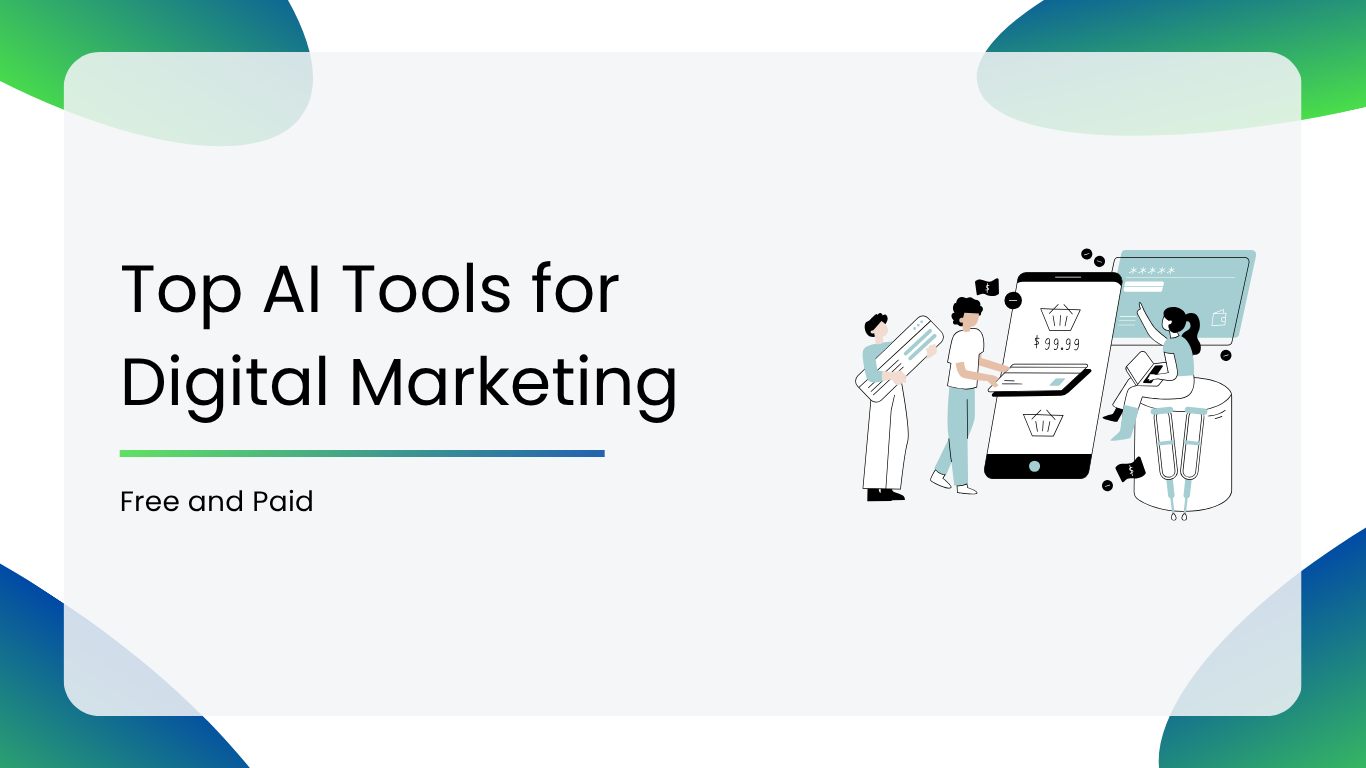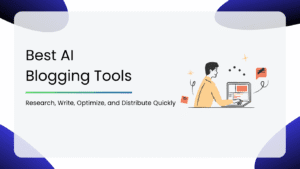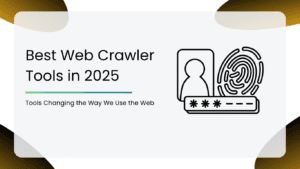Artificial Intelligence is the secret behind the most successful digital marketing strategies today. Whether it’s creating killer content, automating campaigns, or predicting what your audience wants before they even know it themselves, AI is reshaping the way marketers work.
We’ve rounded up the top AI tools for digital marketing, including both free and paid, so that you can choose wisely and get started with the one that actually delivers. There’s something for every marketer, no matter your budget.
How AI Tools Help With Digital Marketing?
Digital marketing moves fast. One minute you’re posting something, the next you’re juggling three ad campaigns, replying to DMs, and trying to figure out why yesterday’s email blast tanked! That’s where AI steps in like your very own marketing sidekick.
- Save Time, Scale Faster: AI can write blogs, social captions, and even video scripts in seconds. What used to take hours earlier gets done in no time now.
- Optimized Campaigns, Backed by Data: AI tools crunch the numbers for you, predicting which ads will work, and when your audience is most likely to click.
- Automate Repetitive Tasks: You don’t need to do the A/B testing or send email follow-ups manually. AI handles all this so that you can focus on the strategy.
- Personalization at Scale: From personalized product descriptions to dynamic email content, AI lets you tailor every touchpoint.
Key Categories of AI Tools for Digital Marketing
Not all AI tools are built the same. Depending on what you’re trying to level up, there’s an AI available for that.
- Content Creation & Copywriting: Need a blog intro, Instagram caption, or an entire email sequence? AI tools can help generate high-quality content that saves time and sounds human.
- SEO Optimization: From keyword suggestions to optimizing existing content, AI tools in this category help your pages rank better.
- Design & Visuals: AI can help create everything from social posts to website banners with zero Photoshop headaches.
- Email Marketing: AI not just writes the email; it figures out when to send it, who to send it to, and what subject line will act as a good hook, and get opened.
- Ad Management & Automation: If you’re running paid campaigns across platforms, AI can help generate ad copy, tweak visuals, and even auto-adjust budgets based on performance.
- Analytics & Insights: AI can show you what’s working, what’s not, and what to try next. It’s like having a marketing strategist who can work for you for hours.
Comparison of Top AI Tools for Digital Marketing (Free and Paid)
| Tool Name | Category | Free Plan | Key Strength |
| Rytr | Content | Yes | Fast AI Copywriting |
| Copy.ai | Content | Yes | AI Marketing Templates |
| Jasper | Content | No | AI Brand Voice Writing |
| Ubersuggest | SEO | Yes | AI Keyword Research |
| Seobility | SEO | Yes | AI Rank Tracking |
| Surfer SEO | SEO | No | AI Content Optimization |
| Userway | Acccessibility | No | Crawlability and Image Alt Text Generation |
| EqualWeb | Acccessibility | No | AI Solutions and Manual Audit |
| AccessiBe | Acccessibility | No | AI Powered Screen Reader and Navigation |
| Canva | Design | Yes | AI Template Design |
| VistaCreate | Design | Yes | Branded AI Visuals |
| Adobe Firefly | Design | No | High-resolution AI Creatives |
| Mailchimp | Yes | AI Email Marketing | |
| MailerLite | Yes | Automation & Campaigns | |
| ActiveCampaign | No | Advanced AI Workflows | |
| AdCreative.ai | Ads | Yes | AI Ad Visuals |
| AdEspresso | Ads | Yes | Easy AI Social Ads |
| Smartly.io | Ads | No | Paid Ad Automation |
| Google Analytics (GA4) | Analytics | Yes | AI Website Analytics |
| Hotjar | Analytics | Yes | AI UX Behavior |
| Piwik PRO | Analytics | No | Privacy-first AI Analytics |
| Simplified | Cross Category (Content + Others) | Yes | AI Writing + Video |
| Writesonic | Cross Category (Content + Others) | Yes | AI Copywriting + Chatbot |
Top AI Tools for Digital Marketing (Free and Paid)
Content Creation & Copywriting
| Table of Contents |
| Content Creation & Copywriting |
| 1. Rytr |
| 2. Copy.ai |
| 3. Jasper |
| SEO Optimization |
| 4. Ubersuggest |
| 5. Seobility |
| 6. Surfer SEO |
| AI Accessibility Tools |
| 7. Userway |
| 8. EqualWeb |
| 9. AccessiBe |
| Design & Visuals |
| 10. Canva |
| 11. VistaCreate |
| 12. Adobe Firefly |
| Email Marketing |
| 13. Mailchimp |
| 14. MailerLite |
| 15. ActiveCampaign |
| Ad Management & Automation |
| 16. AdCreative.ai |
| 17. AdEspresso |
| 18. Smartly.io |
| Analytics & Insights |
| 19. Google Analytics (GA4) |
| 20. Hotjar |
| 21. Piwik PRO |
| Cross Category (Content + Others) |
| 22. Simplified |
| 23. Writesonic |
1. Rytr
Rytr is an AI-powered writing assistant designed to help you generate high-quality content in seconds. Whether you’re writing ad copy, social media captions, or blog intros, it’s a fast and friendly tool that keeps things simple.
Pros:
- Affordable & Accessible: Rytr offers one of the most generous free plans in the space, making it perfect for small teams not ready to commit to pricier tools.
- Beginner-Friendly Interface: Its dashboard is clean and intuitive. You can pick your use case, tone, and language.
- Versatile Use Cases: Rytr covers over 40+ content types. It’s a great option for your quick, everyday needs.
- Supports Multiple Languages: Rytr has multilingual support, which is great if you’re working on a global level or need regional campaign support.
Cons:
- Output Can Feel Robotic: While it’s great for short-form content, longer content can lean toward the generic. You’ll have to keep setting the brand voice.
- Awkward Phrasing: If the prompt is vague, expect the content to be mid. The best way is to give it clear directions and edit aligning with the expected outcome.
Review: Rytr won’t replace your content team, but will definitely make your work process faster. The real magic lies in how it builds zero to something. For quick work and budget-conscious teams, Rytr is a good option.
2. Copy.ai
Copy.ai is an AI-driven writing tool designed to help marketers, entrepreneurs, and content writers generate high-quality copy quickly and efficiently. You can use it to write product descriptions, social media posts, or email campaigns, streamlining your content creation process.
Pros:
- Wide Content-Range: Copy.ai caters to various content needs, including blog posts, social media captions, ad copy, and more.
- User-Friendly Interface: The platform has a simple interface, making it accessible to users of all skill levels.
- Customizable Tone & Style: Copy.ai allows you to set the tone and style of your content piece to match the brand voice, ensuring consistency across different channels.
- Time-Saving: By automating the initial stage of content creation, Copy.ai helps users save time.
Cons:
- Inconsistent Output Quality: The quality of the output can vary depending on the complexity of the prompt. You may need to make significant edits to receive quality output.
- No Browser Extension: Currently, the platform requires users to operate within the web application and manually transfer content to other platforms.
Review: Copy.ai serves as a valuable tool for marketers and content creators seeking to speed up their content creation process. Its extensive library of templates and user-friendly interface make it an excellent choice for producing a variety of content.
3. Jasper
Jasper AI stands out as a comprehensive AI writing assistant, offering a wide range of features designed to enhance the content creation process. Its extensive template library and advanced brand voice customization make it a valuable tool.
Pros:
- Extensive Template Library: Jasper AI offers various content templates tailored for various writing needs, including blogs, product descriptions, etc.
- Advanced Brand Voice Customization: You can define the brand’s tone and style, ensuring that the generated content aligns with the brand’s voice.
- SEO Integration: Jasper AI allows you to create SEO-optimized content that ranks well on search engines.
- Collaboration Features: The platform supports team collaboration, allowing your team to work on the same project simultaneously.
Cons:
- Learning Curve: While Jasper AI offers powerful features, some users may experience a learning curve in navigating the platform.
- Pricing Structure: The pricing may be considered high for individual users or small businesses, creating a cost barrier for those with limited features.
Review: Jasper AI is an exciting option to explore if you’re looking for fast and efficient content creation. The integration with SEO is particularly beneficial for those looking to optimize their content for search engines, providing valuable insights and suggestions to improve content performance.
SEO Optimization
4. Ubersuggest
Ubersuggest, developed by Neil Patel, is an intuitive SEO tool designed to help businesses enhance their online visibility. Offering a suite of features, from keyword research to site audits, Ubersuggest aims to make SEO accessible and actionable for users at all levels.
Pros:
- User-Friendly Interface: Even beginners can navigate through keyword research, backlink analysis, and side audits with ease.
- Comprehensive Keyword Insights: The tool provides detailed keyword data, including search volume, SEO difficulty, etc., expanding your content strategy.
- Affordable: Ubersuggest offers a free version with limited daily searches, making it accessible for users on a budget.
- Backlink Checker: The platform allows users to analyze backlinks, providing insights into referring domains and link quality.
Cons:
- Limited Free Features: The free version comes with restrictions on the number of daily searches and limited data access.
- Basic Competitor Analysis: The competitor analysis feature lacks the depth found in more advanced tools, which may limit strategic insights.
Review: Ubersuggest is a cost-effective and user-friendly SEO tool, making it an excellent option and providing a solid foundation for SEO efforts. While it may not offer very advanced analysis, it’s still a valuable asset for those starting their SEO journey.
5. Seobility
Seobility is an SEO software designed to enhance your website’s visibility and performance. From site audits to banklink analysis, Seobility aims to make SEO accessible and actionable for users at all levels.
Pros:
- Comprehensive Site Audits: Seobility’s website audit tool scans your entire website to identify common SEO issues, helping pinpoint areas needing improvement.
- Keyword Tracking: The platform allows you to monitor keyword rankings daily across multiple search engines and locations.
- Backlink Checker: Seobility offers tools to analyse your backlink profile and identify opportunities for link building.
- TF*IDF Content Optimization: The tool helps you optimize your content by analyzing top-ranking pages for a specific keyword.
Cons:
- Limited Features: While Seobility offers a free plan, it comes with limitations. Advanced features are only available in paid plans.
- Depth of Backlink Analysis: Some users may feel that the depth of analysis could be more comprehensive compared to specialized tools.
Review: Seobility stands out as an SEO tool with comprehensive site audits, keyword tracking, and backlink analysis. It’s affordable and easy to use, making it a good option for SEO work.
6. Surfer SEO
Surfer SEO is a platform designed to enhance on-page SEO through data-driven insights and AI-powered content suggestions. By analyzing ranking factors, Surfer SEO provides actionable recommendations to help you rank higher on Google.
Pros:
- Content Analysis: It evaluates your content against top-ranking pages, offering real-time suggestions on keyword usage, word count, etc.
- AI-Powered Tools: Features like AI Outline Generator and AI Writer assist in creating optimized content efficiently. The AI Humanizer tool further refines AI-generated content.
- Integration with Popular Platforms: Surfer SEO integrates seamlessly with tools like Google Docs, WordPress, etc., streamlining your content creation and optimization process.
- Comprehensive Keyword Research: The Keyword Research tool helps you discover new topic ideas and assess keyword difficulty, aiding in strategic content.
Cons:
- Pricing Structure: The plan can be considered expensive for small businesses with limited budgets.
- Learning Curve: Surfer SEO’s array of features may be overwhelming for newcomers to SEO.
Review: Surfer SEO is a robust tool that helps content creators optimize their content based on data-driven insights. Surfer SEO is a powerful option for those looking to enhance their on-page SEO strategies.
AI Accessibility Tools
7. Userway
Userway is an AI-powered UX tool designed to streamline website accessibility and compliance standards. It includes WordPress and Shopify plugins that improve the design and functionality of websites, effectively increasing click-through rates and earnings per click for businesses.
Pros:
- Easy to Use and Install: Installation is as simple as adding a line of code to your CMS template which is easy even for non-technical users.
- Better Page Structure and Crawlability: Through enforcing proper heading hierarchies and ARIA markup, Userway helps search engines understand, crawl and index your content.
- Automated Image Alt Text Generation: The AI-powered widget can automatically generate alt text for images, which saves time and effort while also boosting image search visibility.
- Inclusion and Wider Reach: With accessibility features like screen-reader compatibility, text resizing and contrast tools – it’s easier for a broader, underserved segment of the audience to engage with your site. This improves brand inclusivity and engagement.
Cons:
- Not Keyword Optimized: While Userway improves your website SEO across the board, it doesn’t focus on keywords or specific marketing goals which require some manual oversight.
- Pricing: The pricing structure can be a bit expensive, especially for those with small budgets.
Review
Userway is amazing in form and versatile in function as an accessibility tool. Its extensive functionalities within its AI widget and pre-defined accessibility profiles open up the opportunity to tap into an untapped audience niche while also being legally compliant.
8. EqualWeb
EqualWeb is a web accessibility platform that offers a suite of AI-powered tools so that websites can comply with standards like Section 508 and WCAG 2.1 and ADA. In turn, their accessibility tools have improved user experience across the board for all audiences and with it, reduced bounce rates.
Pros:
- Hybrid Accessibility Model: EqualWeb combines the best of real-time AI solutions with manual audits by accessibility experts which ensures thorough coverage of issues.
- SEO Visibility Protection: It minimizes legal risks through hybrid checks while ensuring that your site is ranked and remains visible and trustworthy on search engines.
- Boosts SEO: By making websites easier to navigate for those with disabilities, it enhances engagement and user experience which are important to ranking.
- PDFs and Documentation: EqualWeb extends its accessibility features to PDFs and documents by adding structure, alt text and reading order which makes them screen reader compatible.
- AI Widget Assistant: Powered by ChatGPT, EqualWeb’s AI assistant includes features like multilingual support and voice/text commands.
Cons:
- Struggle with WordPress Plugin: The WordPress plugin can be a bit tricky to configure and may not meet some disability needs.
- Overlay Insufficient for Compliance: Despite advanced features, the overlay alone can’t achieve full WCAG compliance.
Review
EqualWeb’s hybrid model makes it a powerful asset to have to ensure accessibility and compliance across industries. It’s inclusive features like advanced scanning tools, PDF auto-tagging and AI widget assistant offer both depth and versatility. EqualWeb’s a solid choice for those seeking comprehensive, user-friendly accessibility solutions.
9. AccessiBe
AccessiBe combines robust automation systems with a central focus on compliance. It equips businesses and organizations with the tools they need to stay compliant, make their websites accessible and keep full control over accessibility settings and implementation.
Pros:
- Fully Automated Fixes: Uses AI to scan and apply accessibility fixes automatically with minimal manual interference.
- AI-Powered Screen Reader and Keyboard Navigator Adjustments: Dynamically adapts website content for assistive technologies without redesigning the website or changing its elements.
- Quick Implementation: Installed with a single JavaScript line which makes for faster deployment.
- Budget Friendly: Carries a lower entry cost than most AI accessibility solutions making it a great fit for smaller businesses.
Cons:
- Not Customizable: Offers only a few manual fine-tuning options for branding and user experience.
- Performance Impact: The widget based on JavaScript may slightly affect site load time, especially on mobile.
Review
AccesiBe is a decent choice for small businesses that want to quickly improve accessibility compliance and enhance user experience for all visitors.
Design & Visuals
10. Canva
Canva is a powerful design platform that helps you produce professional-quality visuals without the need for advanced design skills. With its drag-and-drop interface and extensive library of templates, Canva simplifies the design process.
Pros:
- Huge Template Library: Canva offers a vast collection of free templates, covering everything from social media posts and presentations to brochures and business cards.
- AI-Powered Design Tools: Canva’s Magic Studio suite includes features like Magic Design, Magic Write, etc., enabling users to generate design layouts, create brand copy, and adapt designs.
- Collaborative Features: Canva facilitates real-time collaboration, allowing teams to work together on designs simultaneously.
- Cross-Platform Accessibility: Available on both desktop and mobile devices, Canva ensures that users can create and edit designs on the go.
Cons:
- Limited Advanced Design Features: Canva may lack some advanced features found in professional design software like Adobe Illustrator or Photoshop.
- Potential for Template Overuse: Given the popularity of Canva’s templates, there’s a risk of designs appearing generic or overused.
Review: Canva is an excellent and versatile design tool. Its extensive template library, AI-powered tools, and collaborative features streamline the design process, enabling teams to produce consistent and engaging marketing materials efficiently.
11. VistaCreate
VistaCreate is a powerful graphic design platform that empowers users to create professional-quality visuals effortlessly. VistaCreate offers a user-friendly interface and a plethora of tools to bring your creative ideas to life.
Pros:
- Wide Template Library: VistaCreate has a vast collection of over 200,000 professionally designed templates.
- AI-Powered Image Generation: With its AI Image Generator, VistaCreate allows users to create unique, high-quality visuals by simply inputting descriptive prompts.
- Cool Creative Assets: Users have access to a rich library of royalty-free photos, videos, and music tracks.
- Advanced Editing Tools: VistaCreate offers a suite of advanced editing features, including background removal, text animation, and video editing capabilities.
Cons:
- Limited Mobile App Functionality: Users seeking full editing capabilities may find the mobile experience limiting.
- Learning Curve: Users unfamiliar with design tools might need time to fully leverage the platform’s capabilities.
Review: VistaCreate’s overall functionality and affordability make it a compelling choice in the design space. It is an accessible design tool, offering a comprehensive suite of features that caters to both beginners and professionals.
12. Adobe Firefly
Adobe Firefly is a cutting-edge generative AI tool designed to empower creativity by transforming text prompts into stunning visuals. Integrated into Adobe’s Creative Cloud suite, Firefly offers a range of features that cater to all.
Pros:
- Integrated with Adobe Creative Cloud: Firefly’s deep integration with Adobe’s flagship applications allows users to incorporate AI-generated content directly into their existing workflows.
- Advanced Image Generation: Firefly allows users to refine details such as style, camera angles, and lighting. These models are designed to produce high-quality images.
- Text-to-Video: Firefly introduces text-to-video and text-to-vector functionalities. Users can generate 1080p video clips and vector graphics from simple text prompts.
- Firefly Boards: Firefly Boards provides an infinite canvas for teams to brainstorm, visualize, and refine creative concepts collaboratively.
Cons:
- Limited Free Access: Firefly gives you a few free credits. Once these credits are exhausted, you need to wait for them to reset or subscribe to a paid plan.
- Struggle with Complex Prompts: It may struggle with complex or highly detailed requests, so users need to refine their prompts.
Review: Firefly’s advanced image generation capabilities make it an interesting asset for creativity across industries. Firefly’s overall performance and features position it as a leading choice for AI-powered design tools.
Email Marketing
13. Mailchimp
Mailchimp has evolved from a simple email marketing tool into an all-in-one marketing platform. Mailchimp helps businesses create, send, and analyze email campaigns that drive engagement and growth.
Pros:
- Advanced Automation: Mailchimp offers powerful automation tools that enable businesses to create personalized email sequences based on user behavior and interactions.
- Analytics and A/B Testing: Mailchimp provides insights into campaign performance, allowing marketers to optimize their strategies for better results.
- Extensive Integration Options: Mailchimp integrates seamlessly with apps and services, enabling businesses to streamline their marketing efforts across platforms.
- Free Plan with Generous Limits: Mailchimp’s free plan offers up to 10,000 contacts, making it an excellent choice.
Cons:
- Limited Advanced Features: Advanced features like A/B testing and others are only available on high-tier paid plans.
- Pricing Can Be High: As your subscriber list grows, Mailchimp’s pricing can become expensive.
Review: Mailchimp is a powerful email marketing campaign that caters to businesses of all sizes. Its overall feature set and ease of use make it a top choice in the segment.
14. MailerLite
MailerLite offers features like a drag-and-drop editor, automation workflows, and landing page builders. It allows users to create, manage, and analyze email campaigns with ease, providing scalable solutions to meet their needs.
Pros:
- User-Friendly Interface: The platform offers an intuitive interface, making it accessible for users without technical expertise.
- Advanced Automation Features: It allows users to set up personalized email sequences based on subscriber behavior, enhancing engagement and conversion rates.
- Comprehensive Analytics: MailerLite provides detailed reports on open rates, click-through rates, and subscriber activity.
- Seamless Integrations: MailLite integrates with various platforms like Shopify, WordPress, and Zapier.
Cons:
- Customer Support Limitation: Live chat support option is limited to high-tier plans, which may be a drawback.
- Learning Curve: Setting up intricate automation workflows may require a learning curve, especially for new users.
Review: MailerLite balances simplicity with powerful features. While there are some limitations on the free plan, the overall value and scalability offered by MailerLite position it as a top contender in the email marketing space.
15. ActiveCampaign
ActiveCampaign offers a suite of tools that combine email marketing, CRM, and sales automation. It helps users create personalized customer journeys using email. With a powerful automation capability, ActiveCampaign stands out as a versatile solution for modern marketers.
Pros:
- Advanced Automation: ActiveCampaign’s automation workflows are highly customizable, allowing users to set up complex sequences based on subscriber behavior, engagement, and other triggers.
- Omnichannel Marketing: The platform supports multichannel marketing, including email, SMS, WhatsApp and messaging.
- Reporting & Analytics: The platform provides insights into campaign performance, customer behavior, and sales metrics
- Extensive Integrations: ActiveCampaign integrates with popular platforms like Slack, Shopify, and WordPress, amongst others.
Cons:
- No Free Plan: While ActiveCampaign does provide a 14-day free trial, businesses must commit to a paid plan to use it beyond that.
- Learning Curve: While the platform is user-friendly, mastering its advanced automation may require a learning curve.
Review: ActiveCampaign’s advanced automation workflows, CRM integration, and omnichannel marketing capabilities make it a valuable tool. The platform offers significant value for businesses ready to invest in their marketing automation journey.
Ad Management & Automation
16. AdCreative.ai
AdCreative.ai is an AI-powered platform that enables marketers to create high-conversion ad creatives in no time. By leveraging advanced machine learning algorithms, it automates the creation of visually appealing and performance-tailored ads.
Pros:
- Rapid Ad Generation: AdCreative.ai allows users to create hundreds of high-performing ad creatives in seconds.
- AI-Driven Insights: The platform provides value data-backed insights, helping users make informed decisions about ad performance and optimization.
- Multichannel Support: The platform enables users to create ads suitable for Meta, Google, LinkedIn, and more.
- Creative Scoring: The AI evaluates and scores your ad creatives, providing actionable insights.
Cons:
- Pricing Structure: The subscription cost can be prohibitive for small businesses.
- Limited Customization: Some users may find the customization options insufficient for their specific branding needs.
Review: AdCreative.ai is a strong option if you’re looking to streamline your ad creation process. Its AI-driven capabilities allow for the rapid generation of high-quality ad creatives, backed by data insights to optimize performance. It’s definitely a versatile choice for businesses.
17. AdEspresso
AdEspresso by Hootsuite helps marketers to efficiently manage and optimize campaigns across platforms. The platform offers a range of tools to create, test, and analyze ads, ensuring optimal performance and return on investment.
Pros:
- Streamlined Campaign Creation: AdEspresso simplified the ad creation process by allowing users to design campaigns for multiple platforms within a single interface.
- A/B Testing Capabilities: The platform excels in A/B testing, enabling users to experiment with various ad creatives, headlines, and targeting options.
- Automated Campaign Optimization: The platform offers automated optimization tools that adjust bids and budgets based on real-time performance data.
- Comprehensive Analytics Dashboard: The platform provides a detailed analytics dashboard that tracks key performance indicators such as CTR, conversion rates, and return on ad spend.
Cons:
- Pricing Structure: The subscription costs can be a little overwhelming for people on a budget.
- Learning Curve: Familiarizing oneself with all the features and functionalities may take time, especially if you’re using it for the first time.
Review: AdEspresso’s user-friendly interface, combined with robust A/B testing and automated optimization features is a big win. The comprehensive analytics dashboard provides actionable insights, enabling data-driven decision-making.
18. Smartly.io
Smartly.io is an advanced advertising platform that integrates creative automation, media buying, and real-time optimization into a unified platform. It efficiently lets marketers manage and scale campaigns across various platforms.
Pros:
- Cross-Channel Management: Smartly.io centralizes campaign management, allowing users to launch, manage, and optimize campaigns across multiple channels from a single dashboard.
- Advanced Automation: The platform automates all the actions, reducing manual effort and giving insightful ad campaign management.
- Smart Budget Allocation: Using predictive algorithms, Smartly.io allocates budgets effectively across campaigns, optimizing for performance and return on ad spend.
- Real-Time Performace Insights: The platform provides an actionable reporting dashboard that aggregates data from various channels, offering insights into campaign performance.
Cons:
- Price Structure: The pricing is based on ad spend. This cost may be a barrier for small businesses or individuals on a budget.
- Steep Learning Curve: New users may experience a learning curve due to the platform’s extensive features and capabilities.
Review: Smartly.io is a decent option for someone seeking to automate and optimize their cross-platform advertising efforts. Smartly.io is well-suited for medium to large enterprises and agencies aiming to enhance their digital advertising strategies.
Analytics & Insights
19. Google Analytics (GA4)
Google Analytics (GA4) represents a significant evolution in tracking and analyzing user behavior. It combines data from websites and mobile apps into a unified view, allowing businesses to gain deeper insights into the customer journey.
Pros:
- Event-Based Data Model: GA4 uses an event-based data model, allowing for more specific tracking of user experience, like, clicks, scrolls, and video views.
- Enhanced Reporting: GA4 offers advanced reporting capabilities like funnel analysis, path analysis, and others.
- Predictive Metrics: GA4 can predict future user actions, such as recent purchases or churn, enabling more targeted marketing efforts.
- Improved Data Privacy: GA4 is designed with privacy in mind, helping businesses comply with data protection regulations.
Cons:
- Complex Setup: Working with GA4 can be complex and may require technical expertise.
- Steeper Learning Curve: The tools may require a learning curve, which may necessitate additional training and adaptation.
Review: GA4 marks a significant advancement in web and app analytics, offering a flexible approach to understanding user behavior. GA4’s enhanced capabilities make it a valuable tool for businesses aiming to stay ahead in the evolving digital landscape.
20. Hotjar
Hotjar is a product experience insights platform that combines behavior analytics and feedback tools to help you understand your users’ needs and behavior. By providing tools like session recordings, heatmaps, surveys, and user interviews, Hotjar allows you to see how users interact with your site and gather direct feedback.
Pros:
- Session Recordings: Watch how real users navigate your site, identify pain points, and understand what could be the usability issues.
- Heatmaps: You can visualize where users click, move, and scroll on your pages, helping you understand what grabs their attention and what gets ignored.
- On-Site Surveys: You can deploy surveys to collect feedback from users when they interact with your website, gaining immediate insights into their experience.
- Feedback Polls: You can place feedback polls on specific pages to understand user sentiments and gather suggestions for improvements.
Cons:
- Learning Curve: New users may need some time to familiarize themselves with the platform’s features and navigate through the various tools effectively.
- Limited Customization in Feedback Tools: The customization options for surveys and feedback pools can be somewhat limited compared to other specialized survey tools.
Review: Hotjar is an invaluable tool for understanding user behavior and gathering actionable insights to improve user experience and conversion rates. Its ease of use and powerful features make it a must-have for digital marketers and UX professionals seeking to optimize their websites and applications.
21. Piwik PRO
Piwik PRO is an analytics suite that combines advanced tracking capabilities with a strong emphasis on data privacy. It provides organizations with the tools needed to understand user behavior, optimize digital experience, and maintain full control over their data.
Pros:
- Comprehensive Analytics Suite: Piwik PRO integrates multiple functionalities into a single platform, like analytics, tag manager, and consent manager.
- Data Privacy and Compliance: Piwik PRO prioritizes data ownership and compliance to retain full control over your data.
- Advanced Reporting: The platform offers powerful reporting tools like custom dashboards and real-time data to access up-to-date insights.
- Seamless Integrations: Piwik PRO integrates with various tools like Google, Zapier, etc., to enhance its capabilities.
Cons:
- Learning Curve: New users may find the platform’s extensive features overwhelming initially.
- Pricing Structure: While the core plan is free, advanced plans come at a cost, which might be a consideration.
Review: Piwik PRO prioritizes data privacy and compliance. It’s all-in-one platform approach, combined with reporting tools and flexible hosting options, makes it an attractive choice for organizations handling sensitive data.
Cross-Category Tools (Content + Others)
22. Simplified
Simplified integrates multiple AI-driven tools into a single platform, eliminating the need for multiple subscriptions and interfaces. This allows for seamless workflows and consistent branding across various marketing channels.
Pros:
- AI Chat Bot: You can engage in smart conversations to brainstorm ideas or refine your content.
- Image Generator: Its Image Generator creates stunning visuals using AI models, catering to diverse needs.
- Social Inbox: You can plan, schedule, and publish posts across multiple platforms from a unified dashboard.
- Team Collaboration: You can work seamlessly with your team using real-time editing and feedback tools.
- Video Editing: The AI assistance can also help generate and edit videos, including subtitles, voiceovers, etc.
Cons:
- Advanced Features Require Higher Plans: Some premium tools are gated behind higher-tier subscriptions.
- Learning Curve: New users may need time to familiarize themselves with the platform’s extensive features.
Review: Simplified offers a wide range of tools to streamline content creation and other marketing efforts. While some advanced features are available only in higher-tier plans, the platform provides ample resources to get started and grow your marketing initiatives.
23. Writesonic
Writesonic is an AI-driven content creation platform designed to help marketers, bloggers, and businesses generate high-quality, SEO-optimized content quickly and efficiently. It offers a suite of tools for writing, editing, and optimizing various types of content.
Pros:
- AI Writer: The AI Writer allows for the creation of detailed, SEO-friendly content tailored to your specifications.
- SEO Optimization Tools: You can utilize built-in SEO features like keyword research, meta tag generation, and content optimization to enhance your content’s visibility.
- Chatsonic Integration: Access a conversational AI assistant for brainstorming ideas, refining content, and conducting research, making the content creation process more effective.
- Multilingual Support: AI Writer supports content creation in multiple languages, catering to a global audience.
Cons:
- High Plan: Accessing premium tools may have a cost barrier, which can hamper the user experience.
- Multiple Features: While having multiple features is an exciting thing, it can also invite a learning curve for a lot of users.
Review: With advanced features like real-time data integration and customizable brand voice, Writesonic is a solid choice. Its free plan has enough features to explore and get started with strong content deliverables.
AI tools have become indispensable in today’s digital marketing landscape. It’s helping businesses save time, optimize campaigns, and deliver personalized experiences at scale. Whether you’re creating content, boosting your SEO, automating ads, or analyzing data, the right AI tool can transform your marketing efforts.
If you found this guide helpful, be sure to explore more AI-focused insights on our website:
- Top AI Datasets Marketplaces
- 11 AI Tools to Revolutionize Your Social Media Strategy
- Top 11 AI tools to generate AD copies
FAQs
Yes, many free AI tools offer robust features that can handle various aspects of digital marketing, from content creation to SEO.
Paid tools typically provide more comprehensive features, better customization, and higher limits on usage.
Start by evaluating your requirements. If you’re testing small projects, free tools might suffice. For long-term growth and automation, investing in paid tools is a must.
AI tools are designed to assist marketers by automating repetitive tasks and providing insights, not to replace human creativity and strategy.
Disclosure – This post contains some sponsored links and some affiliate links, and we may earn a commission when you click on the links at no additional cost to you.





